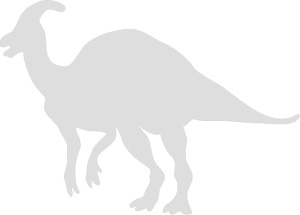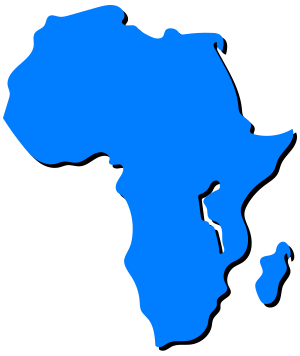Every month, 100,000 readers use the Dinosaur Database, but we receive no support from you. Developing and updating the database requires a lot of work. If you want it to remain open and be updated, please support us via the "Buy us a coffee" button available on every page or via the Support page.
Dinosaur: Taleta taleta

| Length*: | 4.2 m | 13.8 ft |
| Weight*: | 385 kg | 849 lb |
*The largest known specimen
Period
Epoch: Late Cretaceous
Stage: Late Maastrichtian
Years: 67-66 Ma
Details
Status: valid
Author: Longrich et al.
Year: 2025
Distribution
Area: Africa
Country: Morocco
Region: Khouribga
Formation: “Couche III” Phosphates
Description
Taleta taleta
Taleta taleta is a small lambeosaurine hadrosaurid dinosaur from the latest Maastrichtian (Late Cretaceous) Phosphates of Morocco. It represents the third arenysaurin lambeosaurine species identified from the Upper Couche III layer of the Oulad Abdoun Basin, after Ajnabia odysseus and Minqaria bata. The genus name derives from the Arabic word taleta (“three”), referencing its status as the third named duckbill from this locality.
Its discovery supports the hypothesis of a rapid, dispersal-driven adaptive radiation of European-origin lambeosaurines into North Africa shortly before the end-Cretaceous extinction.
Geographic Location
Locality: Sidi Chennane, Oulad Abdoun Basin, Morocco
Physical Characteristics
Taleta taleta is known from an associated pair of left and right maxillae (MHNM.KH.1557), both with in situ teeth. Although no postcranial material is preserved, comparative maxillary anatomy suggests an animal similar in size to Ajnabia odysseus, with an estimated body length of 4–5.5 meters (13.1–18.0 ft) and weight of 380–500 kg (838–1,102 lb)
Diagnostic features include:
- Ectopterygoid ridge located dorsally on the lateral surface of the maxilla (unlike in Ajnabia or Minqaria)
- Straight maxillary toothrow
- Large, obliquely oriented maxillary teeth with very prominent, posteriorly raked primary ridges
- Single functional tooth per maxillary tooth family (vs. multiple in most hadrosaurids)
- Alveoli opening ventrolaterally and being mediolaterally expanded
These traits distinguish Taleta from other arenysaurins and reflect possible paedomorphic evolution (retention of juvenile traits into adulthood).
Diet and Feeding Habits
Taleta taleta was herbivorous, like all hadrosaurids. Its reduced tooth count, enlarged tooth crowns, and simplified grinding surface suggest a specialization for feeding on specific plant materials—potentially softer or less fibrous vegetation. These features, combined with a uniquely structured alveolar margin, indicate a different feeding strategy compared to sympatric Ajnabia and Minqaria, likely allowing for niche partitioning within the hadrosaurid guild.
Habitat and Distribution
The species lived during the latest Maastrichtian, around 66–67 million years ago, in the shallow marine to coastal environments of the Phosphate Platform in central Morocco. The Oulad Abdoun Basin’s Couche III beds are known for their extraordinary vertebrate fossil diversity, primarily marine (e.g., sharks, mosasaurs), but also containing rare terrestrial forms such as hadrosaurids, abelisaurids, and titanosaurs.
This region likely represented a large island or coastal shelf system isolated from the rest of Africa by the Trans-Saharan Seaway, facilitating rapid insular diversification of colonizing species.
Behavior and Social Structure
No direct evidence of behavior exists, but by analogy with other lambeosaurines, Taleta may have lived in small groups or herds. The simplified dentition and jaw morphology hint at dietary specialization, which could correspond with reduced interspecific competition and ecological separation among coexisting lambeosaurines.
Discovery and Research
Taleta taleta was described in 2025 by Longrich, Pereda-Suberbiola, Bardet, and Jalil, based on material housed at the Muséum d’Histoire Naturelle de Marrakech (MHNM). The maxillae were discovered in close association in Upper Couche III of the Sidi Chennane area. Given the preserved bone texture and lack of juvenile features, the holotype individual is interpreted as an adult, further supporting its distinction from juveniles of other species.
Phylogenetic analyses place Taleta within Arenysaurini, forming an African subclade with Ajnabia and Minqaria. Its blend of primitive and derived traits suggests it is basal to both.
Significance and Notable Facts
- Represents the third named lambeosaurine from Morocco
- Exhibits a unique combination of cranial and dental traits not seen in other hadrosaurids
- Indicates high late Maastrichtian hadrosaurid diversity in North Africa, possibly driven by dispersal from Europe
- Jaw and tooth morphology suggest niche differentiation and ecological specialization
- Likely a case of paedomorphic evolution, preserving juvenile dental patterns in a mature individual
Conclusion
Taleta taleta is a key addition to our understanding of Late Cretaceous dinosaur faunas in Africa, revealing that lambeosaurine hadrosaurids underwent rapid diversification upon arrival in a newly colonized environment. Its unique dental adaptations highlight the evolutionary plasticity of hadrosaurids and the influence of paleogeography and dispersal on dinosaur evolution during the final moments of the Mesozoic.
Locations
Sources
Material: Associated left and right maxillae with in situ teeth
References: Longrich, Nicholas R.; Pereda-Suberbiola, Xabier; Bardet, Nathalie; Jalil, Nour-Eddine (2025-05-28). "A new hadrosaurid dinosaur from the late Maastrichtian Phosphates of Morocco provides evidence for an African radiation of lambeosaurines". Gondwana Research (in press).



